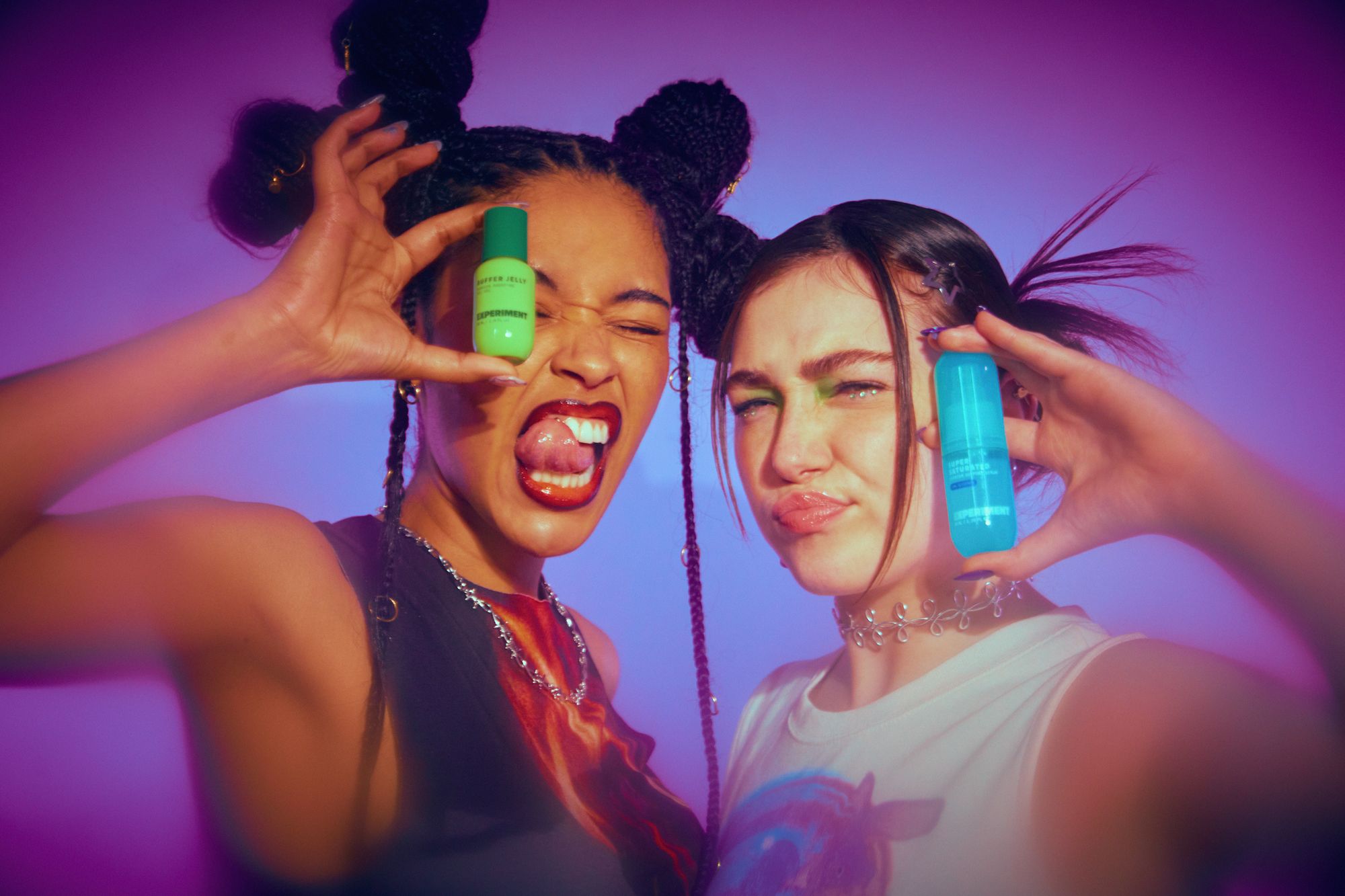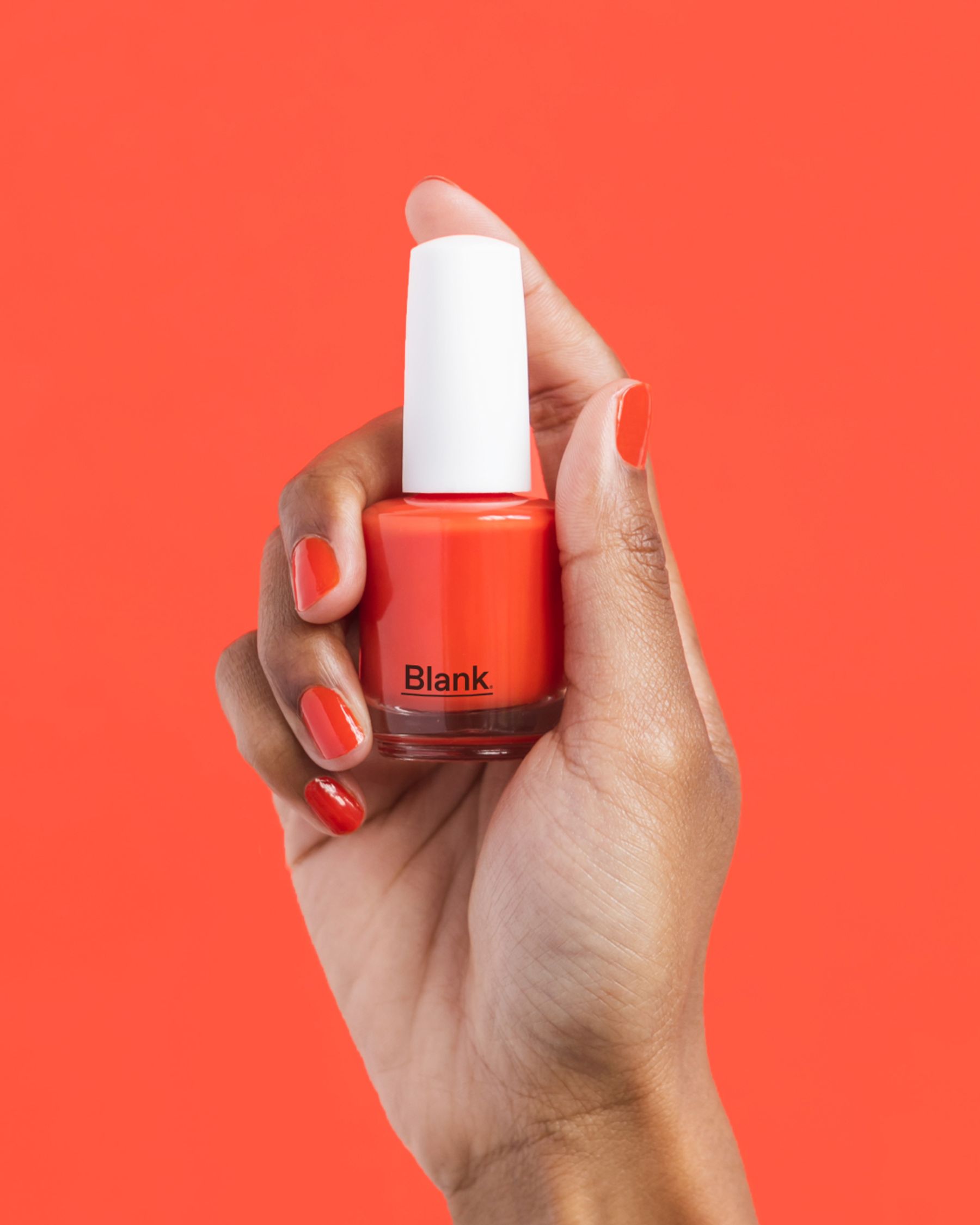As the beauty trend cycle swings back to science-based ingredients, we chat to Lisa Guerrera about using social media to catapult Experiment to viral status
Lisa Guerrera set up Experiment in 2020, using her and co-founder Emmy Ketcham’s own savings to launch the brand’s first product: a reusable sheet mask. Since then, the company has raised millions of dollars of funding, found viral fame with its gloopy Super Saturated serum and built up a die-hard audience of fans on social media – all without spending a penny on advertising.
We chatted with Guerrera about the rise of science-backed beauty brands, the secret to organic growth and why Experiment’s branding “leans into the weird”.



- Emma TuckerExperiment is all about science-backed beauty, which is in contrast to the clean beauty trend that’s dominated for a long time. What’s your big ambition with the brand?
Lisa GuerreraI realised what I wanted to do was change culture, and change the way people are buying products. Instead of focusing on hyped or trendy ingredients, or asking what the ‘cleanest’ product was, I wanted to build a brand that people can confidently trust and is backing up what it’s saying with clinical studies. I want people to feel comfortable buying products because they know they’re well formulated, they’re safe and they’ve got the proper preservatives. Moreover they have to work, and people have to be excited to buy the product.
- ETIt’s extremely hard for beauty brands to compete right now. How is Experiment staking its place and standing out?
LGLaunching a beauty brand is easy, but launching one that is something different and innovative is hard. And it doesn’t have to be like you invented an ingredient. We don’t invent any ingredients at Experiment, and we’re not doing hardcore research that takes ten years. We’re simply taking what’s there and puzzling it together in a way that we’ve never seen before, and that’s effective and helpful.
For example, we made glycerin the star of a product and it’s almost an underdog story that people emotionally attach to. People are making videos now being like, ‘I’m a glycerin girl’. It’s about being able to create trends versus follow them, and beauty is a competitive thing because trends move fast and product development timelines are not that fast – you can manufacture a garment faster than you can manufacture a beauty product. We’re interested in creating product that’s innovative and unique and sparks something, and that’s a risky thing to do. But if you can pull it off, it can take you far.
- ETAnd this idea of building something that’s outside trends is, conversely, massively valuable for social media.
LGAny brand needs a really strong understanding of how social media works; you need to know what gets people to stop scrolling and that is the number one thing. If you don’t have a sense for that, you’re going to have a tough time growing organically, and you’re going to have to spend a lot more on paid ads – which is very unsustainable right now. That’s not to say you can’t scale a brand with paid ads, but you need a strong organic base to do it.
One of the advantages we have is that I am a TikToker, and I did social media and influencer marketing for the company I was at before Experiment. I’m not trained in marketing but I learned it in the streets. And I’m 28 – most founders are not so young and, no offence to them, but it’s harder to fully grasp how social media works if you’re not deeply in it, and typically the younger you are the more you’re in it.
That understanding ladders up to our product development. Super Saturated has a texture that’s like snail mucin and it’s the number one thing influencers are showing – everyone is like, ‘what is this blue goop?’ You have to understand how you are formulating the product to capture people’s attention on social media.
“People are making videos now being like, ‘I’m a glycerin girl’. It’s about being able to create trends versus follow them.”
Lisa Guerrera - Co-Founder, Experiment
- ETThis idea of a science-backed brand being fun is, arguably, a different approach in itself. Other brands lean heavily into the serious, clinical language and imagery, while Experiment is being much more playful.
LGA lot of the ‘sciency’ brands in the makeup and skincare space aren’t very inspiring or aspirational, or something you would covet. They’re great brands that have done a lot to educate customers, but I don’t think they’re great at grasping pop culture, and making hypey products that someone wants to buy.
- ETI’ve also noticed the trend cycle shift away from a focus on products being ‘natural’ and ‘clean’. There’s cosmetic scientists on TikTok debunking ingredients lists, and there’s a lot of people abandoning sulphate-free hair care for drugstore brands that have been around forever.
LGIt’s funny because in my original college thesis I had to predict what the future would look like for beauty marketing, and I said clean beauty would be it. This was when Drunk Elephant started, and clean beauty was really taking off. But the trend cycle is cyclical and the pendulum always swings back the other way; we’ll return to science and the expert eventually. I think it speaks to the fact that science will win out in the end because it’s what’s correct – your hair feels better because it’s being treated better; when something has research behind it, it’s efficacious. For the most part we’re using skin and hair products for function, and if it doesn’t perform then it doesn’t have a leg to stand on in the long term. The philosophy of science wins, basically, in every arena. And it’s a helpful perspective because then you’re not a trend, you’re just doing what works.
- ETExperiment’s branding is obviously such a major part of the company’s success. How are you approaching that?
LGOn the branding side, there’s a whole algorithm in my head of how we’re walking the line between aesthetic and science. Ultimately, it’s about subtleties around futurism and optimism, while still being an accessible brand. I think a lot of science brands go too tech or too sterile and become unapproachable, and from an emotional perspective that's not something you can relate to.
We wanted to build branding that was super accessible, super fun and super shareable, and when that happens you’re better able to spread the science because it’s in a package that’s fun to share. The branding helps us achieve that, and it’s just a constant labour of refining, and checking that the positioning works, or that the packaging feels right.
Over time it’ll get more deliberate I’m sure, but in the beginning it’s a gut thing of how we walk the line. We have people who send us memes or random pictures and say, ‘this feels like Experiment’. We try to lean into the weird as much as possible and I feel like the community has really grasped what the brand is, and that’s really exciting.


- ETI like that it’s grown, and continues to grow, naturally. You haven’t invested in marketing or advertising, but you’ve still built something that feels identifiable.
LGI think there’s a dichotomy between try-hard versus organic and something that feels natural. Our branding process was actually really winding and hard, and I never realised when we started how hard it was going to be. And I’m such a brand person: I love packaging, I love seeing how people create their brand, but if you just slap it on top of something there’s no substance behind it.
Often, our in-house designer will make something and I’ll say, ‘Just make it a little uglier, just rough it up a bit’. There’s something endearing and honest and relatable about something that’s not picture pixel perfect in this designed brand way. It’s deeply relatable with consumers on social media.
- ETDid you build the foundations of the brand in a similar way?
LGWe did a very iterative process, rather than one full brand sweep. It was painful, but over time we chipped away at the brand and started realising more and more things about it – rather than doing three rounds and being done. I don’t think that’s a good way to build a brand in the age of social media; you need to iterate alongside your customer.
The Experiment brand continues to evolve over time, and one of the things that we think about is fluidity. There’s companies that we look up to in many ways, and Glossier is a great example – they’ve built a great brand, but their brand walls are really high and they’re really strict. It’s created a situation in which they are less creative, so how do we avoid that fate? How do we ensure our brand walls – while obvious – are not overly strict so we can still step out and move the business forward?
“We try to lean into the weird as much as possible and I feel like the community has really grasped what the brand is, and that’s really exciting.”
- ETAnd I know community is an increasingly important part of Experiment – you’re currently piloting Lab X, which will let people test products ahead of official release.
LGFor a long time we’ve been working with an inner group of influencers and consumers, sampling our products before we launch. That’s a really good strategy for us, because when products launch they can be like, ‘I’ve been trying this for months and it’s amazing’. It’s a true endorsement of the product even on launch day.
We want to expand that programme to more people and do lab sample drops – short runs of lab samples that we put out on a time drop for free. But to access the drop you have to be part of the Lab X community. We wanted to clue people in on the product development process, and Lab X is an opportunity to dive deeper and connect within more people.
There’s a loyalty point programme aspect to it, but it’s about building a closer Experiment community. That’s a buzzy term right now, community, and I’ve been hesitant to create community offline because it’s hard to maintain and make good. We’ve always said that if we don’t have 100 people that would sign up and engage off the bat, then we don’t want to do it.
THE AUFI CONNECTION: We connected Experiment with a shortlist of creative partners for some early design and brand thinking. They’re also one of a handful of brands that we’ve invested in through AUFI Ventures.





